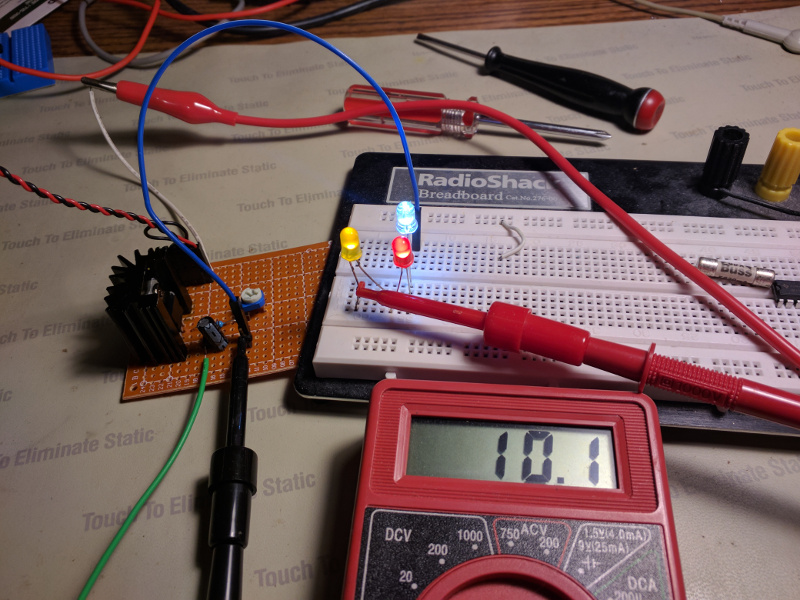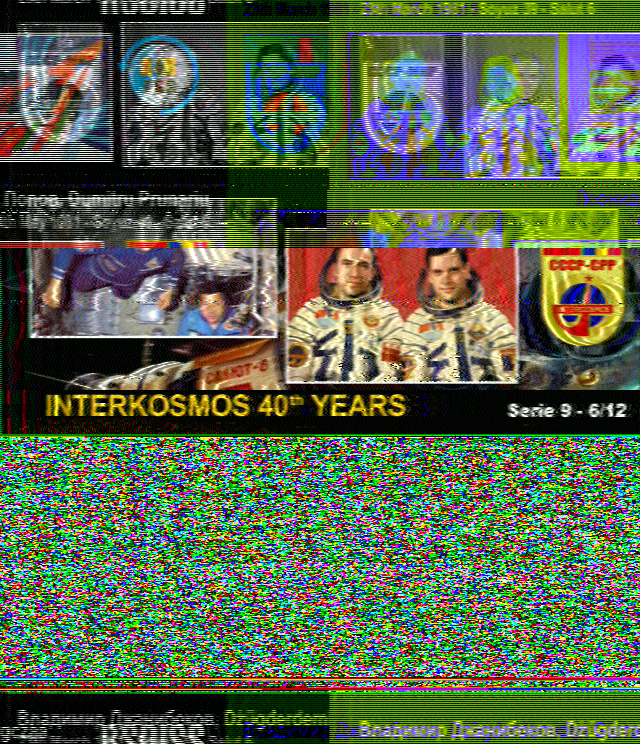Over the weekend, I ripped apart an old DVD burner and harvested the laser diode. I needed something to drive it, and there is a simple trick to use an LM317 adjustable voltage regulator as a constant current source.
The datasheet mentions this:
The device OUTPUT pin will source current necessary to make OUTPUT pin 1.25 V greater than ADJUST terminal to provide output regulation.
I used this functionality to build a constant current driver.
Between April 11th and the 14th, the ISS was broadcasting SSTV images related to the Interkosmos program on 145.800 MHz.
I was able to grab two images while I was in my truck with a terrible setup.
I had a baofeng radio connected to a magmount antenna and was running Robot36 on an android phone. I was surprised that I was able to pick up anything with that mess, but the two images below are what I was able to decode.
I’ve been following ZL2CTM’s video series on building a phasing sdr rig with a teensy and an si5351.
Charlie used a SN74HC74 and an RF splitter to generate the quadrature oscillator signals, but I wanted to see if I could get the si5351 to generate the quadrature signals using two of its outputs.
The Etherkit SI5351 library has an example that shows how to set the phase and I took that example along with Charlie’s teensy sketch and put together a quick example of generating quadrature signals from CLK0 and CLK1 of an SI5351.
I’ve been very busy at work lately and haven’t had the time or energy to work on much, but I did pull out an ancient power supply from my pile of junk that I wanted to investigate.
The whole thing was rusty and full of years of dirt, goo, and assorted crud.
I wasn’t sure if the transformers or caps were shot, but I liked the look of it and figured it would make a cool enclosure for something else if I couldn’t get it working.
A while back, I built a desktop cnc machine with the intent of milling circuit boards. Well, I finally got around to playing with it.
The spindle is just a cheap rotary tool with one of the drill bits that came with it. I really need to get and end mill bit. The drill bit skips around a bit, but it does work.
Below is a photo of the first run and the end result.
I’ve been fiddling with some aprs ptt circuits for baofeng hand-helds for a while now. My original goal was to hook up a raspberry pi with a gps module in my car. I’d run direwolf on the pi and connect it to a cheap baofeng radio.
My first attempt was basically this circuit.
Baofeng radios trigger the ptt by shorting the sleeves of the two audio connectors.
I isolated the audio lines with two audio transformers and set up the pi to trigger the transistor with a GPIO pin.





